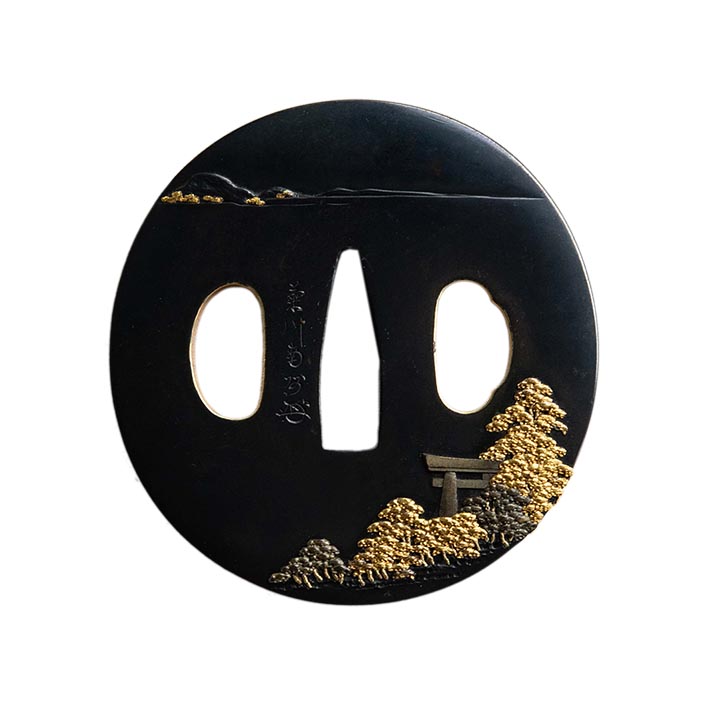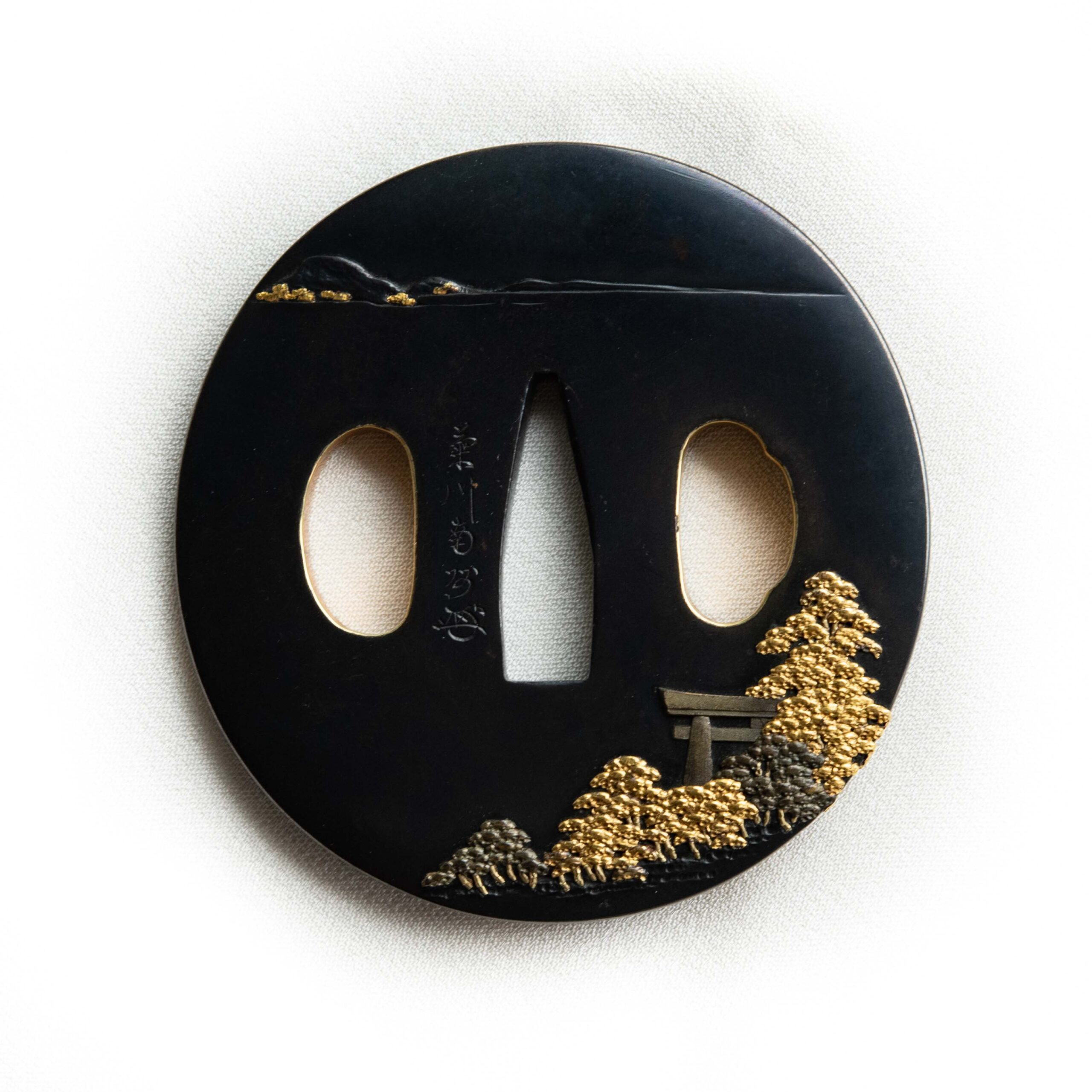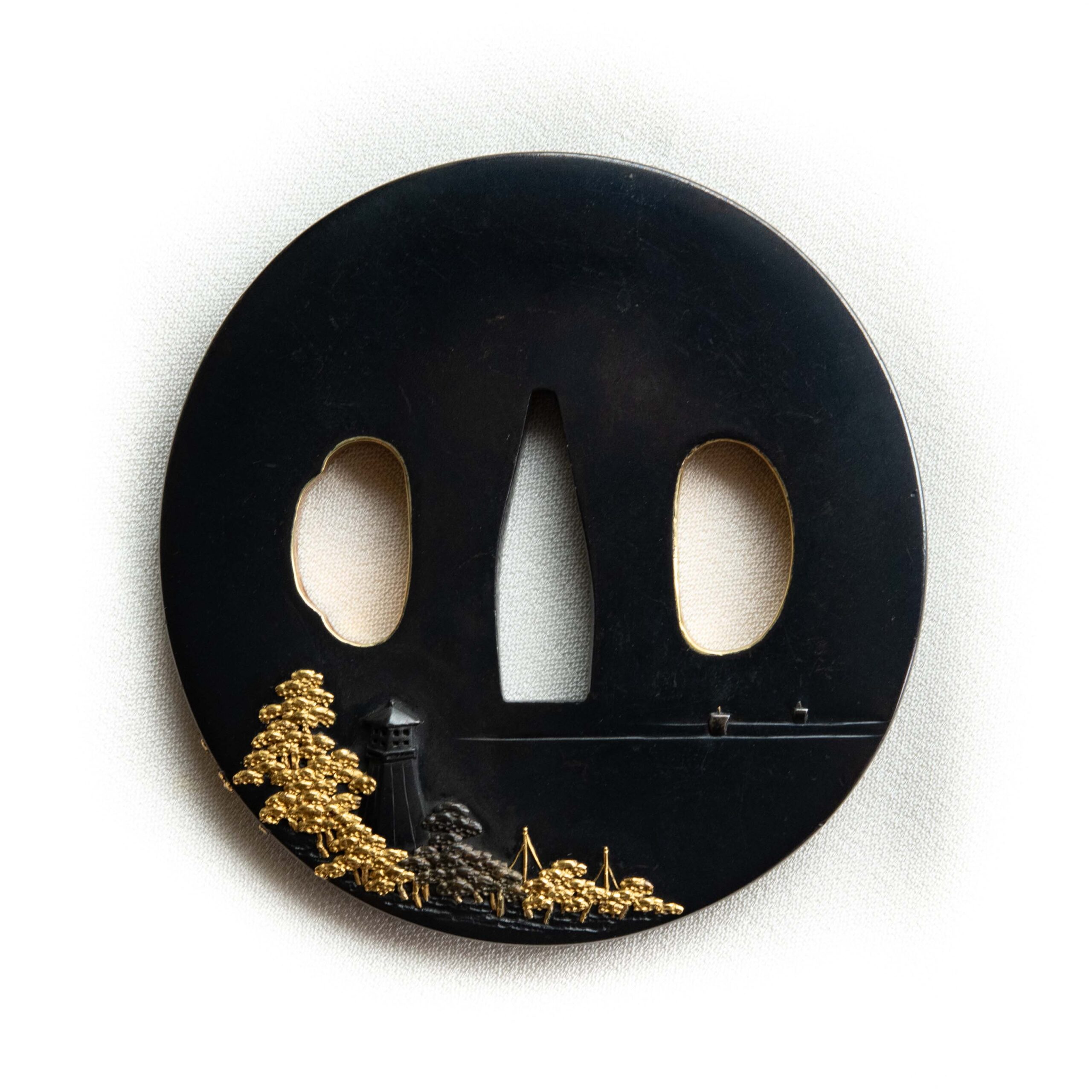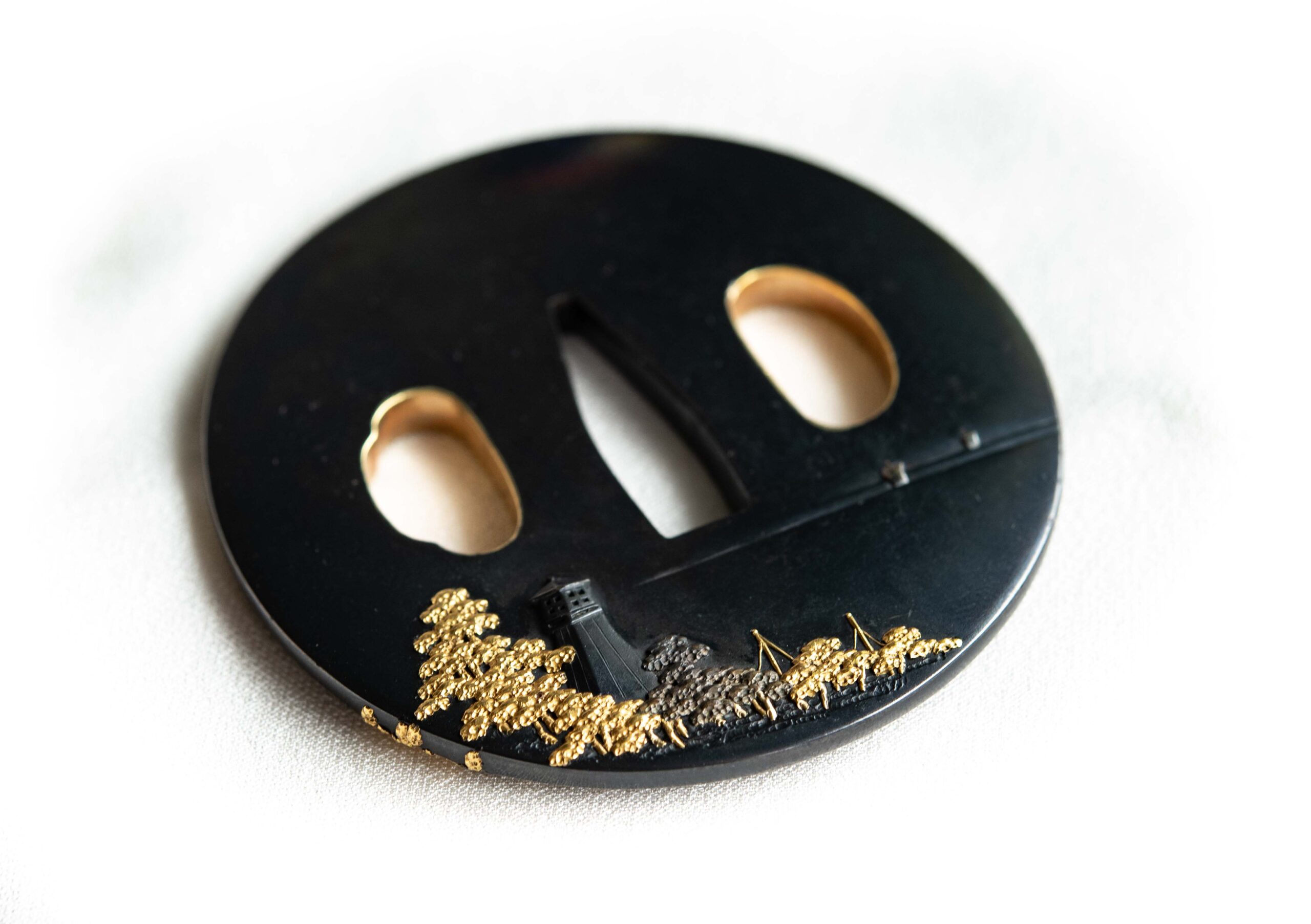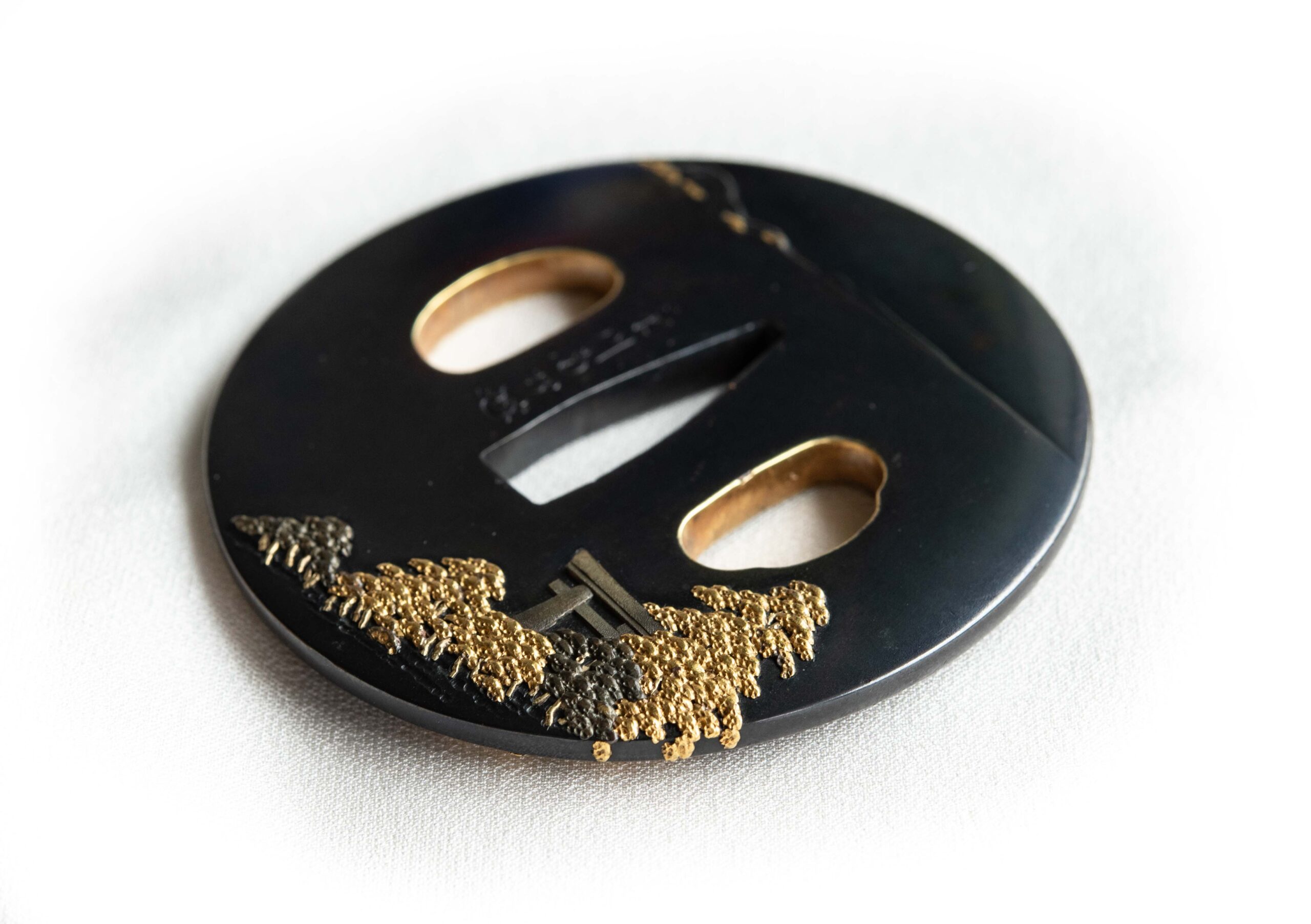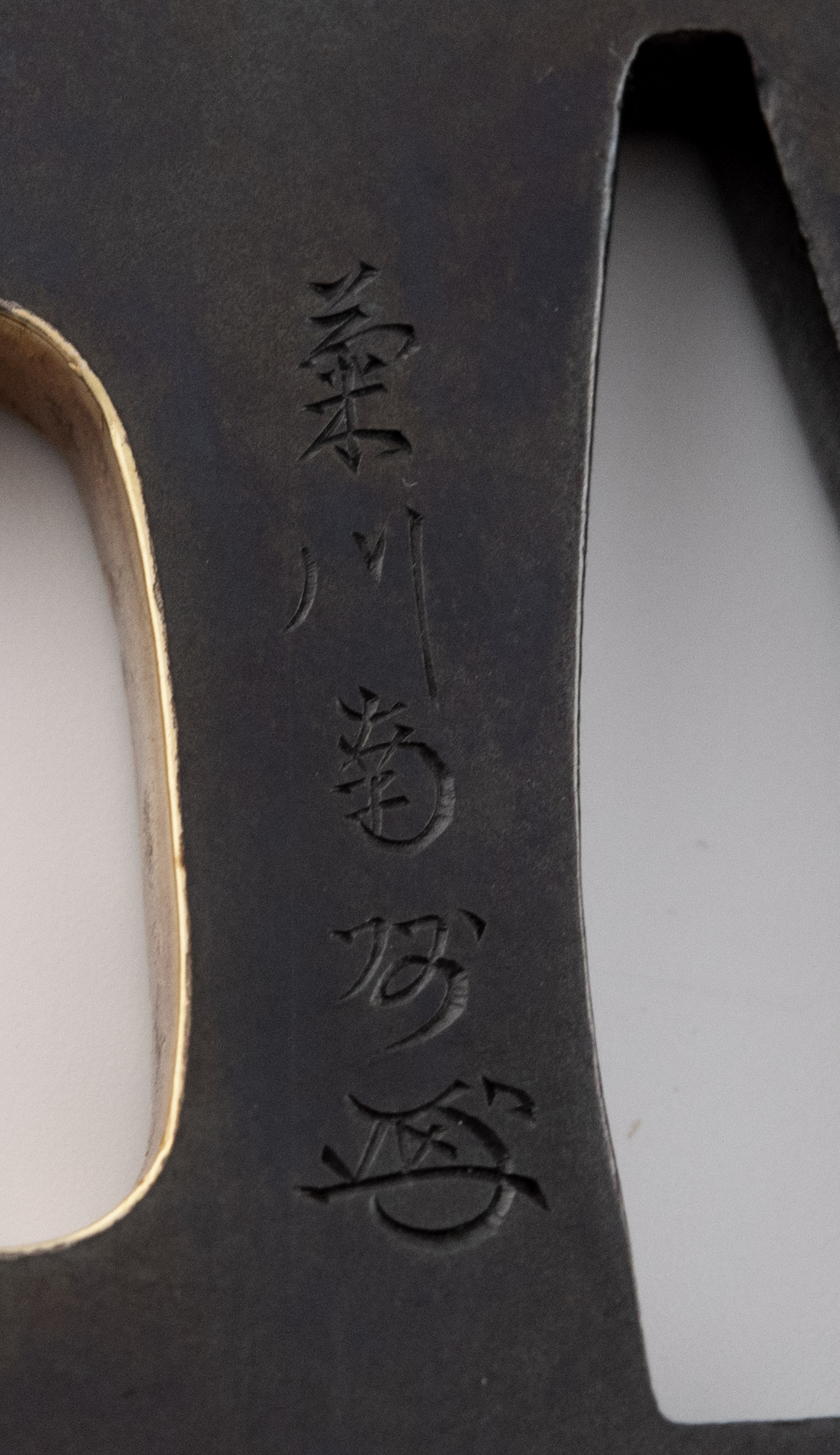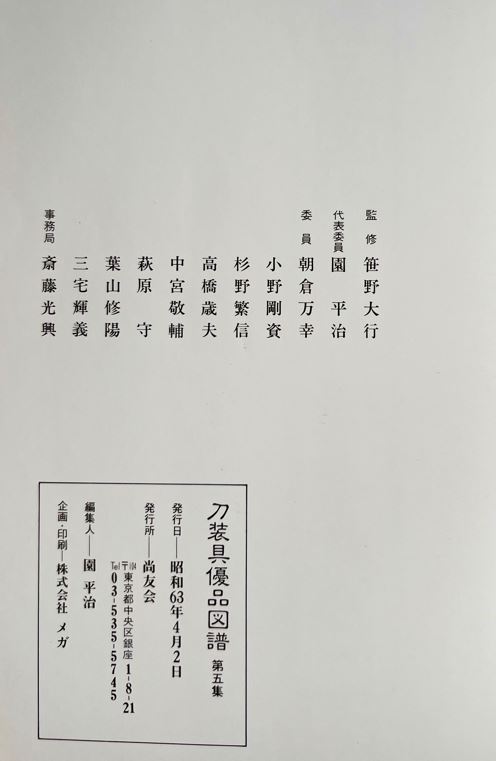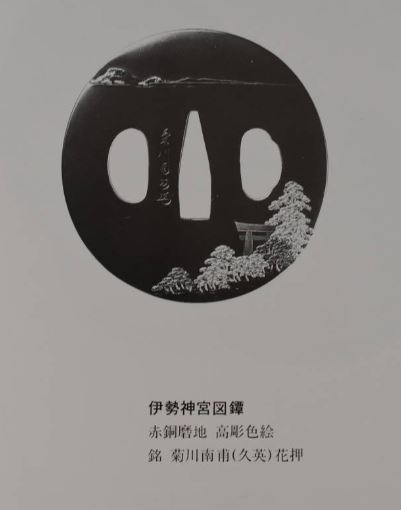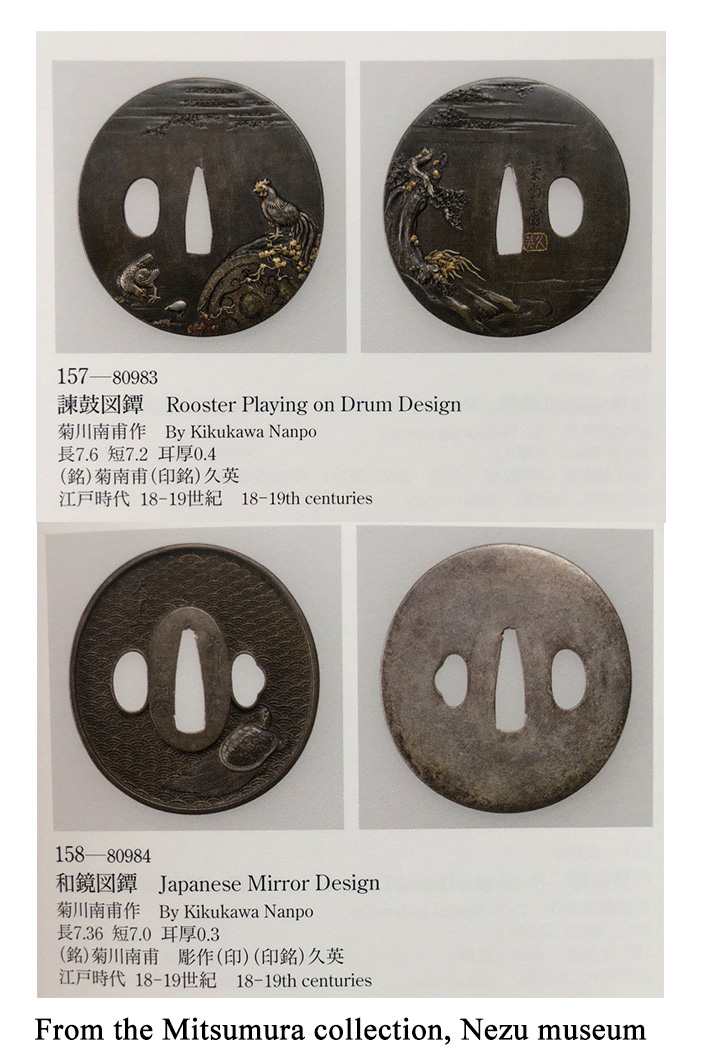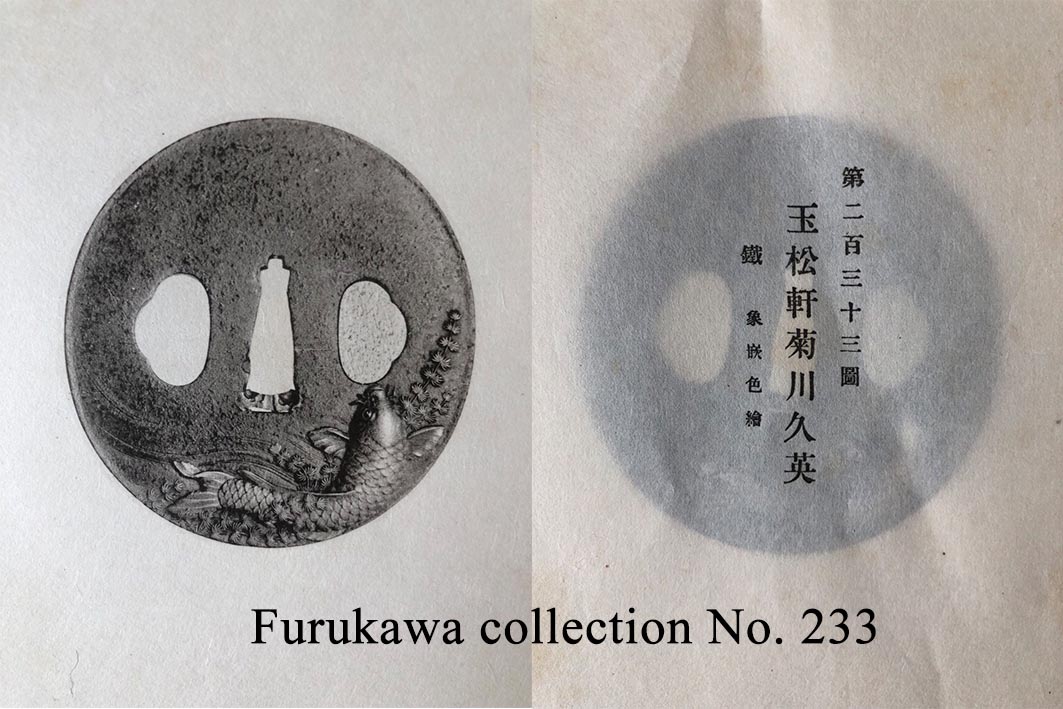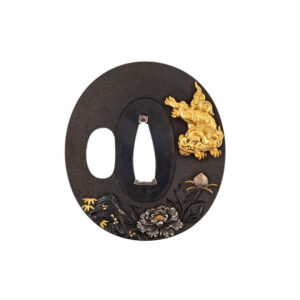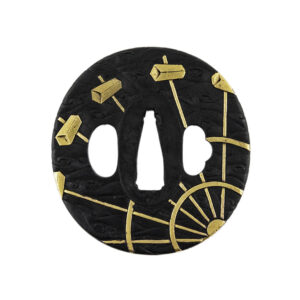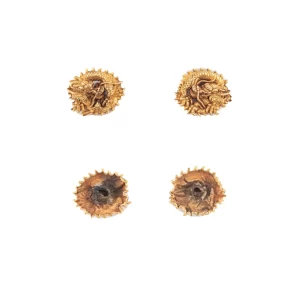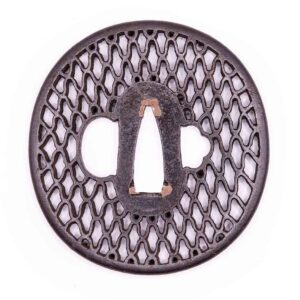The Kikugawa school was founded by Chobei Muneyoshi who worked from 1716 till 1736 and was followed by 2 generations carrying the same name. It is said that Muneyoshi was a skilled engraver of ‘Kiku’ designs (chrysanthemums) which led to the name of the school.
Kikugawa Hisahide, a well known Machibori Kinko artist, studied under the 3rd generation Kikugawa Chobei Muneyoshi from whom Hisahide inherited the name Kikugawa. Later he worked under Omori Teruhide’s master student Chizuka Hisanori. Under this influence he became a highly skilled artist himself and opened his workshop in Koishikawa of Edo, which is in the middle of today’s Ikebukuro and Ueno. He used the name ‘Nanpo’ which was his Nyudo Go among other artist names. The exact dates of his life are not known but from dated pieces we can place him between 1818 and 1830.
(see Markus Sesko, Lexikon der japanischen toso-kinko-Schulen, page 251)
Works of Hisahide are and were present in famous collections such as the Mitsumura, Furukawa and the Baur collection. Tsuba from the Furukawa collection and the Nezu collection are shown as a reference. This very piece here was published in the book ‘Tosogu Yuhin Zufu’ vol. 5, which covered the best Japanese collections of the 20th century.
This Tsuba is made from a dark black Shakudo with a ‘Migaki-Ji’ (polished surface finish) giving it an especially elegant appearance. The trees are made of gold and Shibuichi and fold around the rim of the Tsuba. The large ‘Torii’ (Japanese gate) is also made of Shibuichi. A small golden rim surrounds the Hitsu-Ana. As we can see in the present Tsuba, Hisahide’s works are characterised by a wide empty space and the motif covering only a small part of the plate and as we can see he was capable of working in various techniques.
The design shows a view over the Sumiyoshi Taisha, one of Japan’s most famous shrines located in the bay of Osaka. It has ever been a spiritual protection for the port of Osaka and the old capitals Nara and Kyoto due to its strategic location at the entrance to these areas from the sea.
It was awarded Tokubetsu Hozon by the NBTHK.
Comes with a custom made Kiri box.
H: 6.9 cm
W: 6.65 cm
R: 3 mm
Sd: 5 mm

